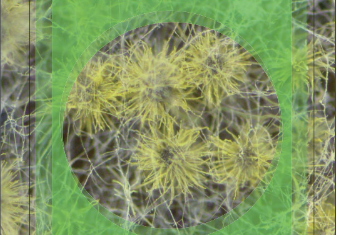
Mold is a common household problem, but not all molds are the same. One of the most concerning types is Chaetomium mold, a fast-growing fungus that thrives in damp environments. If you find Chaetomium mold in your home, it’s a red flag signaling a significant moisture problem that could lead to serious structural damage and health concerns. In this article, we’ll explore what Chaetomium mold is, its dangers, how to detect it, and what steps to take for remediation and prevention.
What Is Chaetomium Mold?
Chaetomium is a genus of mold that consists of over 100 species, most of which thrive in water-damaged buildings. This mold is commonly found in environments with prolonged exposure to moisture, such as:
- Flooded homes and basements
- Leaking roofs and plumbing
- Poorly ventilated bathrooms and kitchens
- Damp crawl spaces and attics
Chaetomium mold starts as a white or gray fuzzy colony and gradually darkens to a greenish-black or brownish color. It has a distinctive musty odor and can spread quickly if not addressed.
Why Is Chaetomium Mold Dangerous?
1. Health Risks of Chaetomium Exposure
Like other toxic molds, Chaetomium releases mycotoxins that can affect human health, particularly for individuals with weakened immune systems, respiratory issues, or allergies. Common symptoms of exposure include:
- Respiratory issues: Coughing, wheezing, and difficulty breathing
- Allergic reactions: Skin irritation, runny nose, and watery eyes
- Neurological symptoms: Brain fog, dizziness, and headaches
- Weakened immune system: Increased susceptibility to infections
Prolonged exposure to Chaetomium mold can lead to severe health issues, including neurological disorders and autoimmune diseases (Centers for Disease Control and Prevention (CDC)).
2. Structural Damage to Your Home
Chaetomium mold is known for breaking down cellulose-based materials, such as drywall, wood, and insulation. As it spreads, it weakens these materials, leading to:
- Cracked or collapsing walls and ceilings
- Warped and weakened wooden structures
- Damaged insulation, reducing energy efficiency
Ignoring the presence of Chaetomium mold can lead to costly repairs and significant safety hazards.
How to Detect Chaetomium Mold in Your Home
1. Musty Odors
A persistent musty smell, especially in areas with past water damage, can indicate hidden mold growth.
2. Visible Mold Growth
Chaetomium mold starts as cotton-like white spots and darkens over time. It often appears in areas with ongoing moisture problems.
3. Water Damage and Stains
Brown or yellowish stains on ceilings, walls, and floors may indicate water intrusion, which creates an ideal environment for Chaetomium mold.
4. Peeling or Bubbling Paint and Wallpaper
When moisture gets trapped behind surfaces, it can cause paint or wallpaper to bubble and peel, signaling possible mold growth underneath.
5. Indoor Air Quality Testing
If you suspect mold but can’t see it, professional air quality testing can detect Chaetomium spores in the air.
What Causes Chaetomium Mold to Grow?
Chaetomium mold thrives in conditions where moisture is persistent. Common causes include:
- Leaking pipes and plumbing issues
- Roof leaks and poor attic ventilation
- Flood damage and improper drying
- Condensation in poorly ventilated areas
- Damp basements and crawl spaces
If any of these issues exist in your home, you may be at risk for Chaetomium mold growth.
How to Remove and Prevent Chaetomium Mold
1. Fix the Moisture Problem First
Mold will return if the moisture source isn’t addressed. Take these steps:
- Repair plumbing leaks immediately.
- Improve ventilation in high-humidity areas such as bathrooms and kitchens.
- Use dehumidifiers to keep indoor humidity levels below 50%.
- Ensure proper drainage around your home to prevent basement moisture buildup.
2. DIY Mold Removal for Small Infestations
If the affected area is less than 10 square feet, you can attempt mold removal using:
- White vinegar: Kills mold spores and disinfects surfaces.
- Hydrogen peroxide: Effective for removing mold from porous materials.
- Baking soda and water paste: Scrubs mold from surfaces safely.
- Commercial mold removers: For tougher stains and extensive cleaning.
Important: Always wear protective gear (gloves, mask, goggles) when handling mold to avoid exposure.
3. Professional Mold Remediation for Large Infestations
For widespread mold problems, professional remediation is recommended. Experts use:
- HEPA vacuuming to remove mold spores from surfaces and the air.
- Antimicrobial treatments to kill mold and prevent regrowth.
- Structural drying techniques to eliminate excess moisture.
- Removal of contaminated materials such as drywall and insulation.
4. Preventing Future Mold Growth
Once Chaetomium mold is removed, follow these steps to prevent its return:
- Monitor humidity levels regularly with a hygrometer.
- Run exhaust fans in bathrooms and kitchens to improve air circulation.
- Clean and maintain gutters to prevent roof leaks.
- Inspect your home regularly for signs of leaks or water damage.
- Replace damaged insulation to prevent moisture buildup in walls.
When to Call a Mold Specialist
You should seek professional help to test your home for any of the condition above and you are experiencing health problems. Waukesha Mold Inspector will conduct a thorough inspection, perform air quality testing, and provide recommendations for effective remediation.
Conclusion
Chaetomium mold is more than an aesthetic issue—it’s a warning sign of a serious moisture problem in your home. Left untreated, it can lead to severe health risks and costly structural damage. Identifying the source of moisture, removing mold properly, and implementing preventative measures are crucial for maintaining a healthy living environment.
By addressing moisture issues promptly and using proper remediation techniques, you can keep your home mold-free and safe for your family.
If you have any questions or concerns, give us a call to discuss the situation. We are here to help.
References
- Centers for Disease Control and Prevention (CDC). "Mold and Your Health." https://www.cdc.gov/mold
- Environmental Protection Agency (EPA). "Mold and Moisture Control." https://www.epa.gov/mold
- World Health Organization (WHO). "Dampness and Mould: Health Risks and Prevention." https://www.who.int
